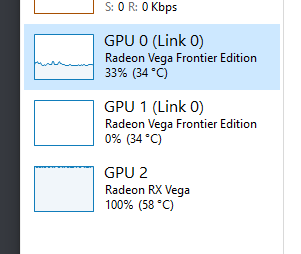Hardware Examples: A Guide to Understanding Basic Computer Components
This guide provides an overview of basic computer components, including examples of hardware. It introduces the main components of a computer system, such as the central processing unit (CPU), the memory (RAM), the hard disk drive (HDD), and the graphics processing unit (GPU). Each component is explained in simple terms, with examples provided to help readers understand their function and purpose. The guide also covers other important aspects of computer hardware, such as motherboards, power supplies, and cooling systems. It provides a solid foundation for understanding the basic building blocks of a computer system.
Computer hardware is the collection of physical components that make up a computer system. From the motherboard to the processor, from the graphics card to the random access memory (RAM), each component plays a crucial role in the functioning of the computer. This article will provide examples of some basic hardware components and explain their role in a computer system.
1、Motherboard
The motherboard is the main circuit board of the computer. It connects all the other components of the computer together, providing them with power and data. The motherboard typically contains several slots for expansion cards, such as graphics cards, sound cards, and network cards. It also includes a battery to keep the system clock running during power outages.

2、Processor (CPU)
The processor, or central processing unit (CPU), is the brain of the computer. It carries out the instructions of the software programs that are running on the computer. CPUs come in different shapes and sizes, with different numbers of cores and threads. They also have different clock speeds, which determine how quickly they can execute instructions.
3、Graphics Card (GPU)
The graphics card, or graphics processing unit (GPU), is responsible for rendering graphics on the computer screen. It handles all the graphical processing tasks, such as rendering 3D objects, applying lighting effects, and generating animations. GPUs are particularly important for playing games, editing videos, and performing other graphically intensive tasks.
4、Random Access Memory (RAM)
Random access memory (RAM) is a type of computer memory that allows data to be accessed randomly without having to read through all the preceding data. It is used to store data that is being actively worked on by the CPU. RAM is volatile, meaning that if the power is lost, all data stored in RAM will be lost, as it is not backed up on a hard drive or other persistent storage medium.
5、Hard Drive (HDD)

The hard drive is a non-volatile storage device that provides long-term data storage for a computer system. It contains one or more rotating disks coated with magnetic material that can be magnetized to represent data as binary digits (0s and 1s). The hard drive stores the operating system, applications, and user data such as documents, pictures, and videos.
6、Solid-State Drive (SSD)
A solid-state drive (SSD) is a type of computer storage device that uses solid-state technology to store data. SSDs are made up of integrated circuit assemblies rather than mechanical moving parts, making them more resistant to mechanical failure and much faster than traditional hard drives. However, SSDs have a limited capacity compared to HDDs and are generally more expensive.
7、Power Supply Unit (PSU)
The power supply unit (PSU) is responsible for providing power to all the components of the computer system. It converts the household AC power into the DC power that computers use. PSUs come in different sizes and shapes, with different power ratings to meet the needs of different computer systems.
In conclusion, each hardware component plays a crucial role in the functioning of a computer system. Understanding these components and their role in the system can help you troubleshoot problems and make informed decisions about upgrading or replacing hardware components as needed.
Articles related to the knowledge points of this article:
Chenevert Hardware: A Legacy of Quality and Innovation
Ackermans Hardware: A Legacy of Quality and Innovation
Title: The Promising Potential of Retained Hardware in Medical Applications
AUBERSON HARDWARE: A legacy of Quality and Innovation
Title: Discovering the Treasures of Ringsted Iowa Hardware Store



